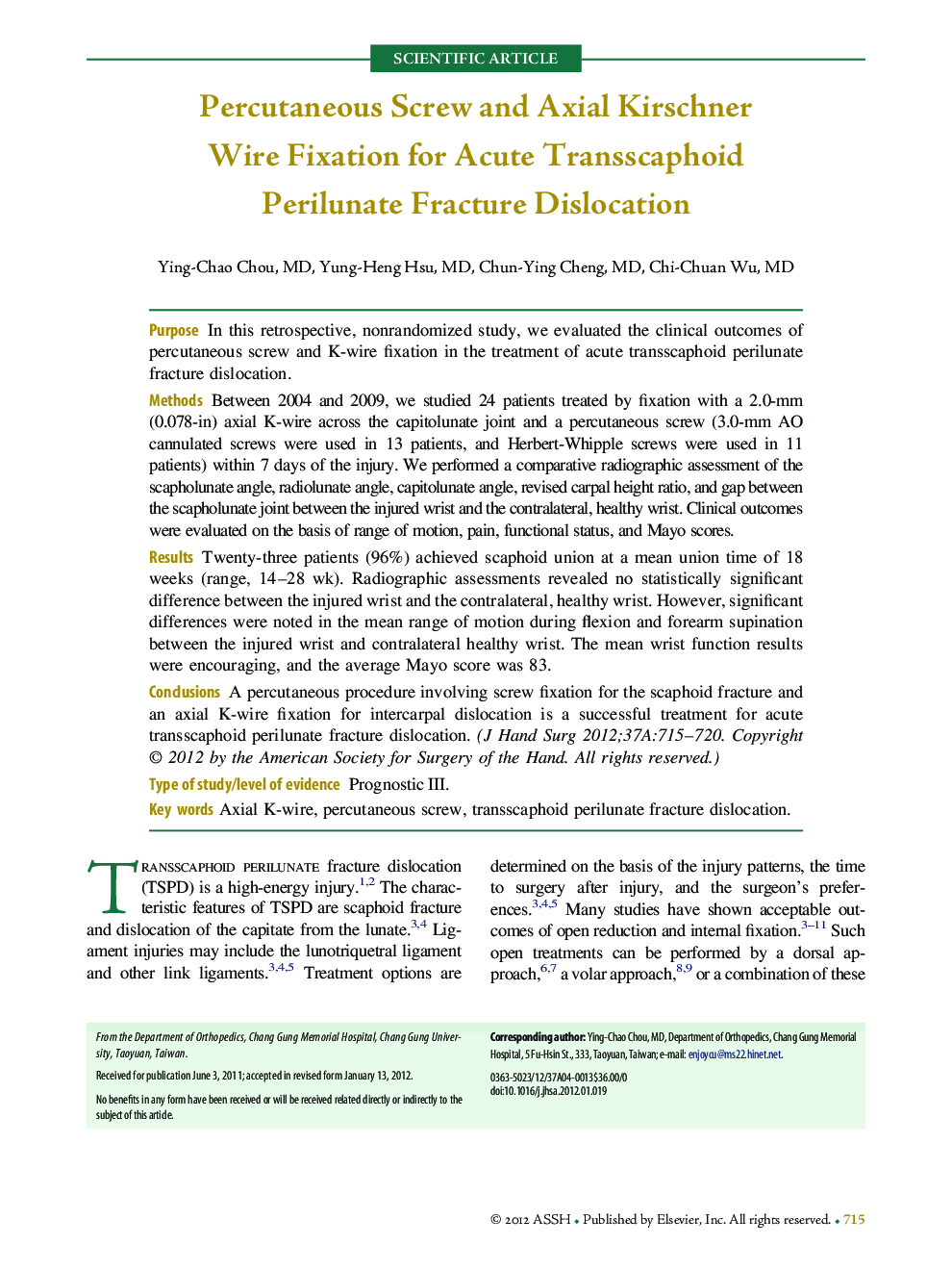| Article ID | Journal | Published Year | Pages | File Type |
|---|---|---|---|---|
| 4069212 | The Journal of Hand Surgery | 2012 | 6 Pages |
PurposeIn this retrospective, nonrandomized study, we evaluated the clinical outcomes of percutaneous screw and K-wire fixation in the treatment of acute transscaphoid perilunate fracture dislocation.MethodsBetween 2004 and 2009, we studied 24 patients treated by fixation with a 2.0-mm (0.078-in) axial K-wire across the capitolunate joint and a percutaneous screw (3.0-mm AO cannulated screws were used in 13 patients, and Herbert-Whipple screws were used in 11 patients) within 7 days of the injury. We performed a comparative radiographic assessment of the scapholunate angle, radiolunate angle, capitolunate angle, revised carpal height ratio, and gap between the scapholunate joint between the injured wrist and the contralateral, healthy wrist. Clinical outcomes were evaluated on the basis of range of motion, pain, functional status, and Mayo scores.ResultsTwenty-three patients (96%) achieved scaphoid union at a mean union time of 18 weeks (range, 14–28 wk). Radiographic assessments revealed no statistically significant difference between the injured wrist and the contralateral, healthy wrist. However, significant differences were noted in the mean range of motion during flexion and forearm supination between the injured wrist and contralateral healthy wrist. The mean wrist function results were encouraging, and the average Mayo score was 83.ConclusionsA percutaneous procedure involving screw fixation for the scaphoid fracture and an axial K-wire fixation for intercarpal dislocation is a successful treatment for acute transscaphoid perilunate fracture dislocation.Type of study/level of evidencePrognostic III.
